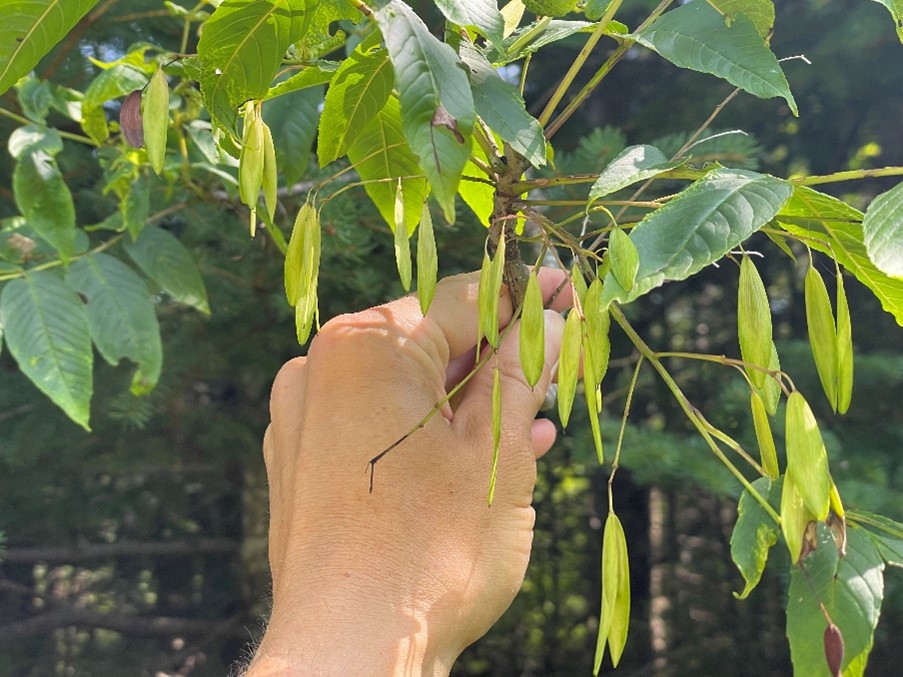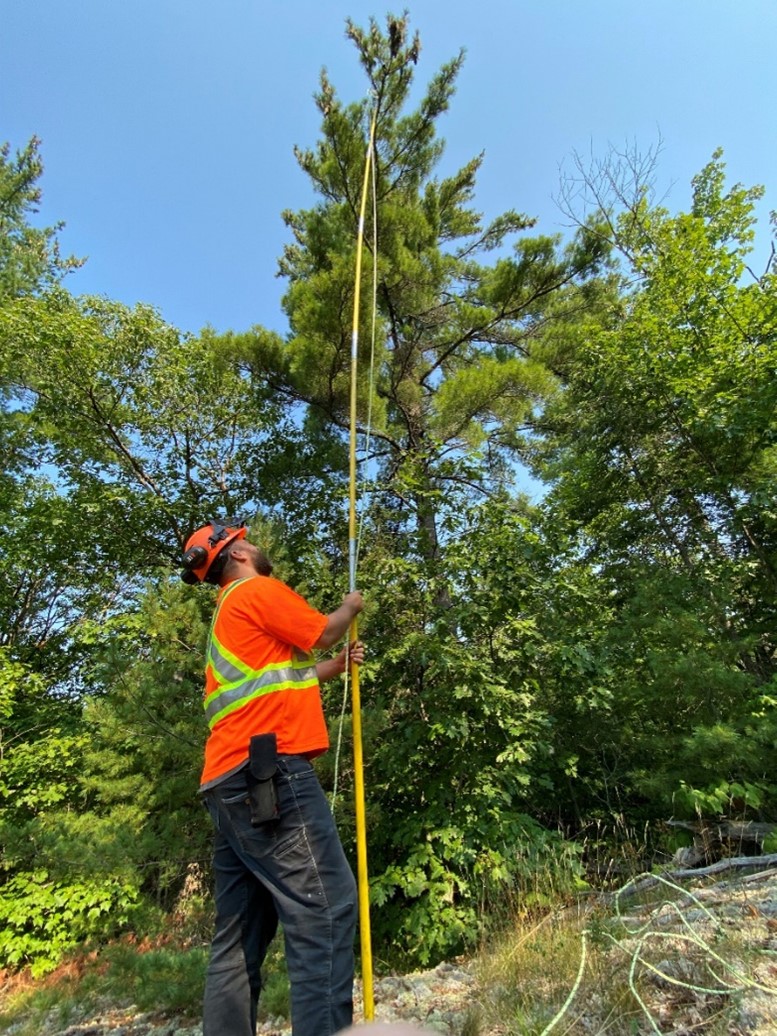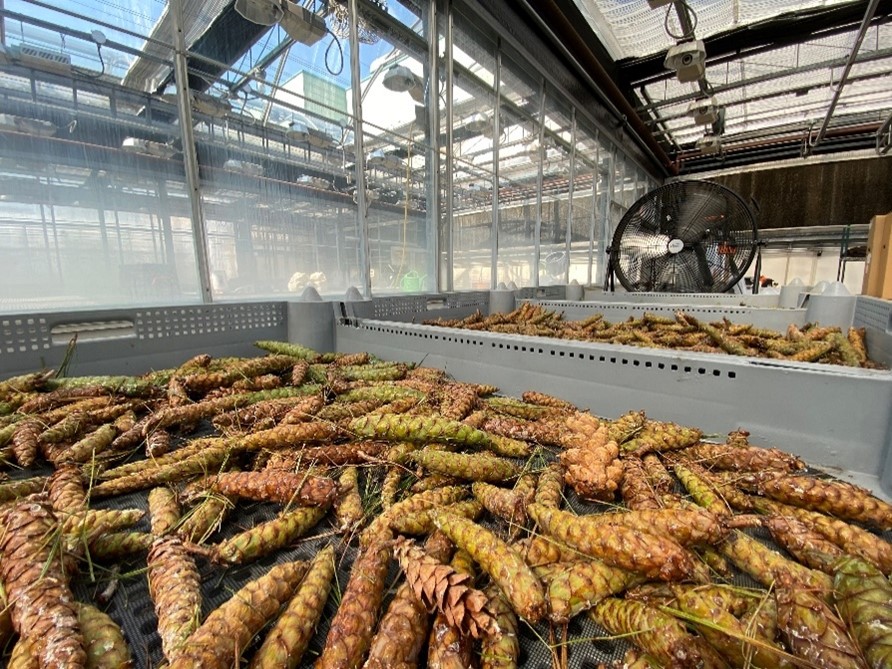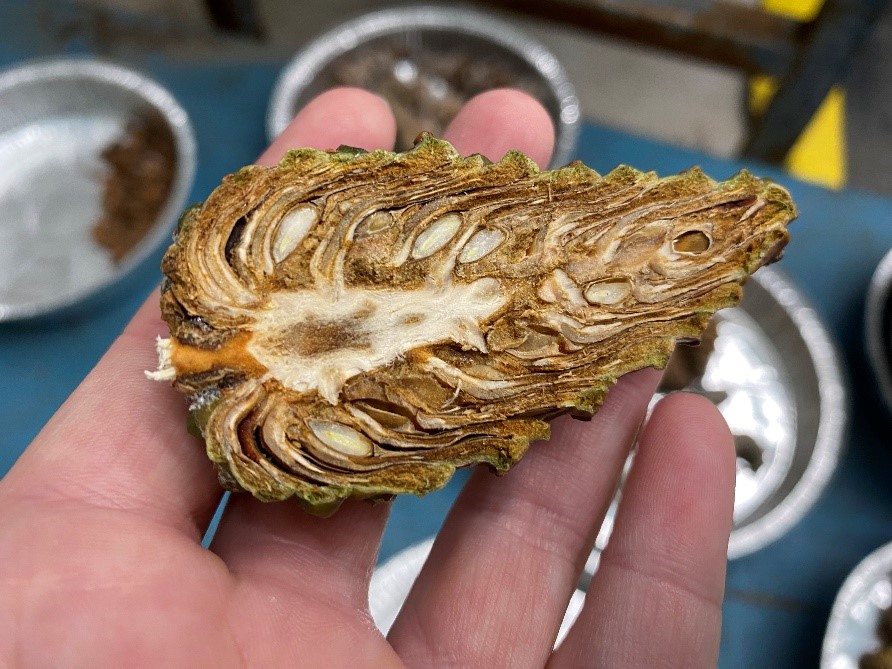Genetic diversity — or the variation in genes in a species or population — is a fundamental source of biodiversity. For forests, it provides a basis for tree adaptation and resilience to environmental stress, pests, and diseases and contributes to community dynamics and ecosystem functioning (FAO 2015; Shaw et al. 2025). Human-caused disturbances such as greenhouse gases, landscape fragmentation, invasive species spread, and air and soil pollution affect how genes move and change, or even loss, in populations over time (evolution), which may threaten genetic diversity of forest tree species. The conservation of forest tree species’ genetic diversity supports forest ecosystem sustainability under changing environments and can enhance economic benefits by breeding trees with important traits such as improved growth rate, wood quality, and disease resistance.
So how can we conserve forest genetic diversity? We have two main approaches: in-situ and ex-situ conservation. In-situ efforts conserve trees in their natural habitat, such as by setting up protected areas or implementing policies such as the Ontario Tree Seed Transfer Policy that consider genetic diversity of regenerated forests (OMNRF 2020). This method allows trees to interact with their natural environments, can be useful but at higher risk of failure given the likely changing and sometimes uncontrollable future environments. On the other hand, ex-situ efforts aim to conserve species under non-native or controlled conditions — such as botanical gardens or seed banks. The global concern for conserving forest genetic resources has led to development of numerous protected areas worldwide. In many cases, both in-situ and ex-situ strategies are needed for effective conservation.
The Ontario Tree Seed Genetic Archive
In 2018, the Ministry of Natural Resources (MNR) committed to establishing and operating a native tree seed bank at the Ontario Forest Research Institute (OFRI) in Sault Ste. Marie, which provides an efficient and cost-effective way to conserve genetic resources of Ontario native forest species.
The Ontario Tree Seed Genetic Archive (OTSGA) preserves representative seed samples of Ontario’s native tree species to support (1) Ontario’s genetic and biodiversity interests, and (2) scientific research to understand forest genetic resources in Ontario and develop climate change adaptation options. Through the OTSGA, we:
- collect representative seed samples of native tree species from throughout their natural range in Ontario
- preserve the long-term viability of collected seed samples by storing them under optimal conditions
- support urgent species/population recovery programs using appropriately sourced seed
- supply representative seeds to support forest genetic and climate change adaptation research
Figure 1. Black ash seeds a few weeks away from maturation and collection
Step 1: Collecting the right seeds
We aim to collect seeds that are representative of the genetic diversity within a species range, in consideration of seed biology, seed crops periodicity, genetic variation among trees and populations over the landscape, and conservation status:
- Seed biology: Seeds fall into three categories based on drying tolerance: orthodox (viable at low water content), intermediate (viable at medium water content), and recalcitrant (viable only at high water content). We are currently focusing our efforts on orthodox and intermediate seeds, which are more tolerant to desiccation and freezing and can be stored for longer than ten years or even decades.
- Seed crops periodicity: We aim to collect seeds during mast years — years when trees produce a high number of seeds. Collecting in mast years guarantees higher genetic diversity along with better seed health, viability, and germination rates than seed collected in off-years.
- Variation across the landscape: To capture spatial genetic variation within and among populations, we aim to collect seeds from 24 to 30 trees (from 4 distinct stands) within each Ontario ecodistrict of the species’ natural range. This protocol is based on recent genecology research demonstrating spatial variation in functional traits for most temperate and boreal tree species in Ontario (Lu et al. 2014).
- Conservation status: Threatened species such as black ash and hemlock are among our top priorities.
Figure 2. Collecting cones from a white pine tree
Step 2: Seed processing and storage
We collect and store a minimum of 100,000 viable seeds per Ontario ecodistrict. The OTSGA has a seed processing facility at the OFRI Arboretum in Sault Ste. Marie with equipment to extract, clean, and dry seeds. We then store the seeds long term in environmentally controlled and monitored storerooms at OFRI. We run initial germination testing in the spring after one winter of storage and continue to run tests every five years to ensure collections remain viable. We will replace collections when viability drops below 85% of the initial germination test.
Figure 3. Cones are dried to extract seeds and cut in half to examine quality in field. Top photo: White pine cones drying (kilning) in a greenhouse. Bottom photo: red pine cone cut in half to show seeds quality and number.
Looking ahead
Stewardship of Ontario forests involves many people and organizations sharing the responsibility of ensuring sustainable resource use and species conservation. We are grateful to collaborate with and work alongside other government agencies, the three regional forest genetic associations (i.e., the Superior Woods Tree Improvement Association , the Northeast Seed Management Association and the Forest Gene Conservation Association), Indigenous communities, industry, academia, and the public in our local efforts to build and maintain the OTSGA, but also in broader efforts to conserve the genetic diversity of Ontario forests well into the future.
References
[FAO] Food and Agriculture Organization. 2015. Voluntary guidelines to support the integration of genetic diversity into national climate change adaptation planning. Food and Agriculture Organization of the United Nations. Rome, IT. 42 p.
Lu. P., W.H. Parker, M. Cherry, S. Colombo, W.C. Parker, R. Man and N. Roubal. 2014. Survival and growth patterns of white spruce (Picea glauca [Moench] Voss) rangewide provenances and their implications for climate change adaptation. Ecology and Evolution 4: 2360–2373.
[OMNR] Ontario Ministry of Natural Resources. 2020. Ontario tree seed transfer policy. Ontario Ministry of Natural Resources, Sault Ste. Marie, ON. 51 p.
Shaw, R.E., Farquharson, K.A., Bruford, M.W. et al. 2025. Global meta-analysis shows action is needed to halt genetic diversity loss. Nature 638, 704–710




